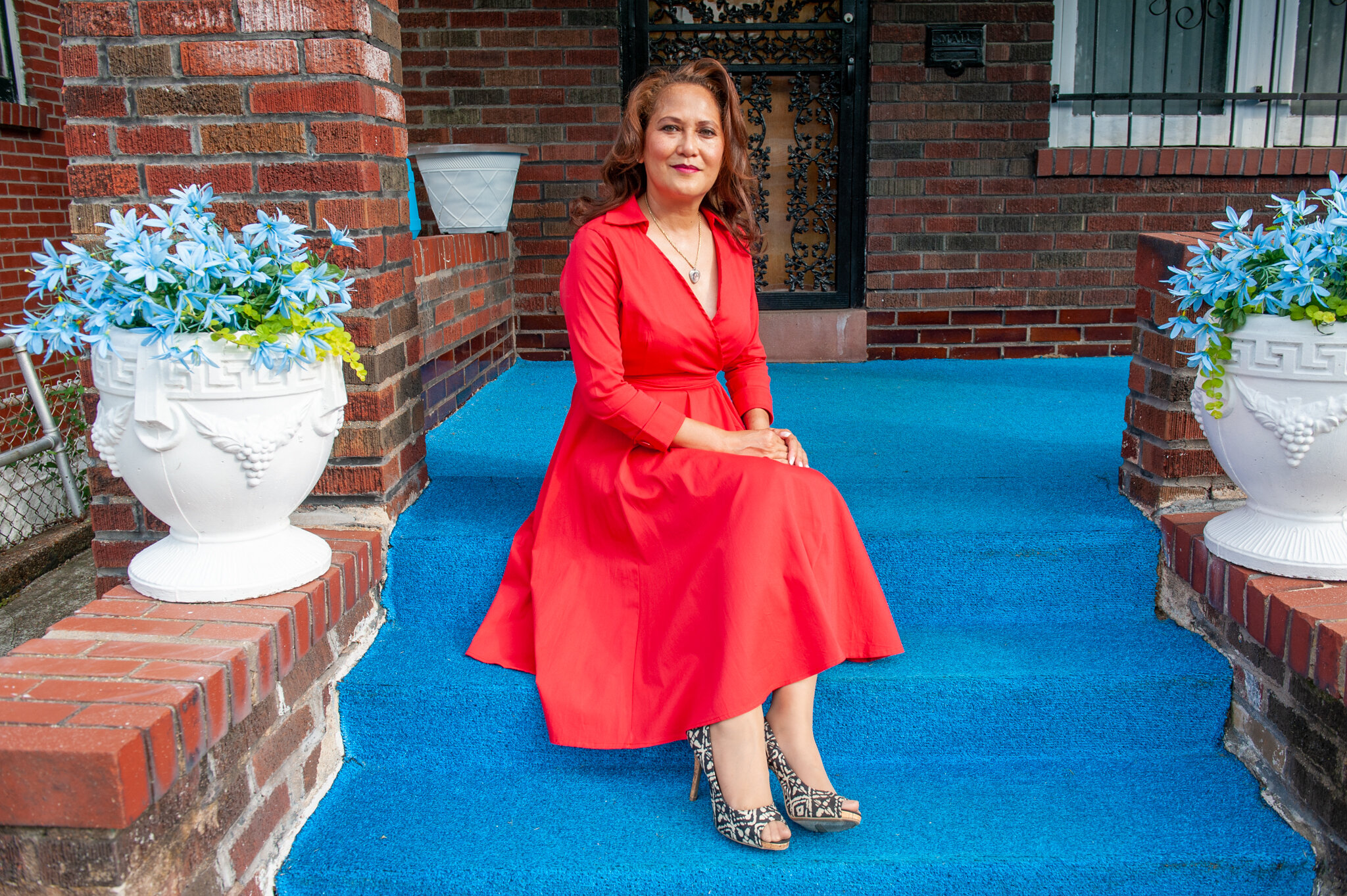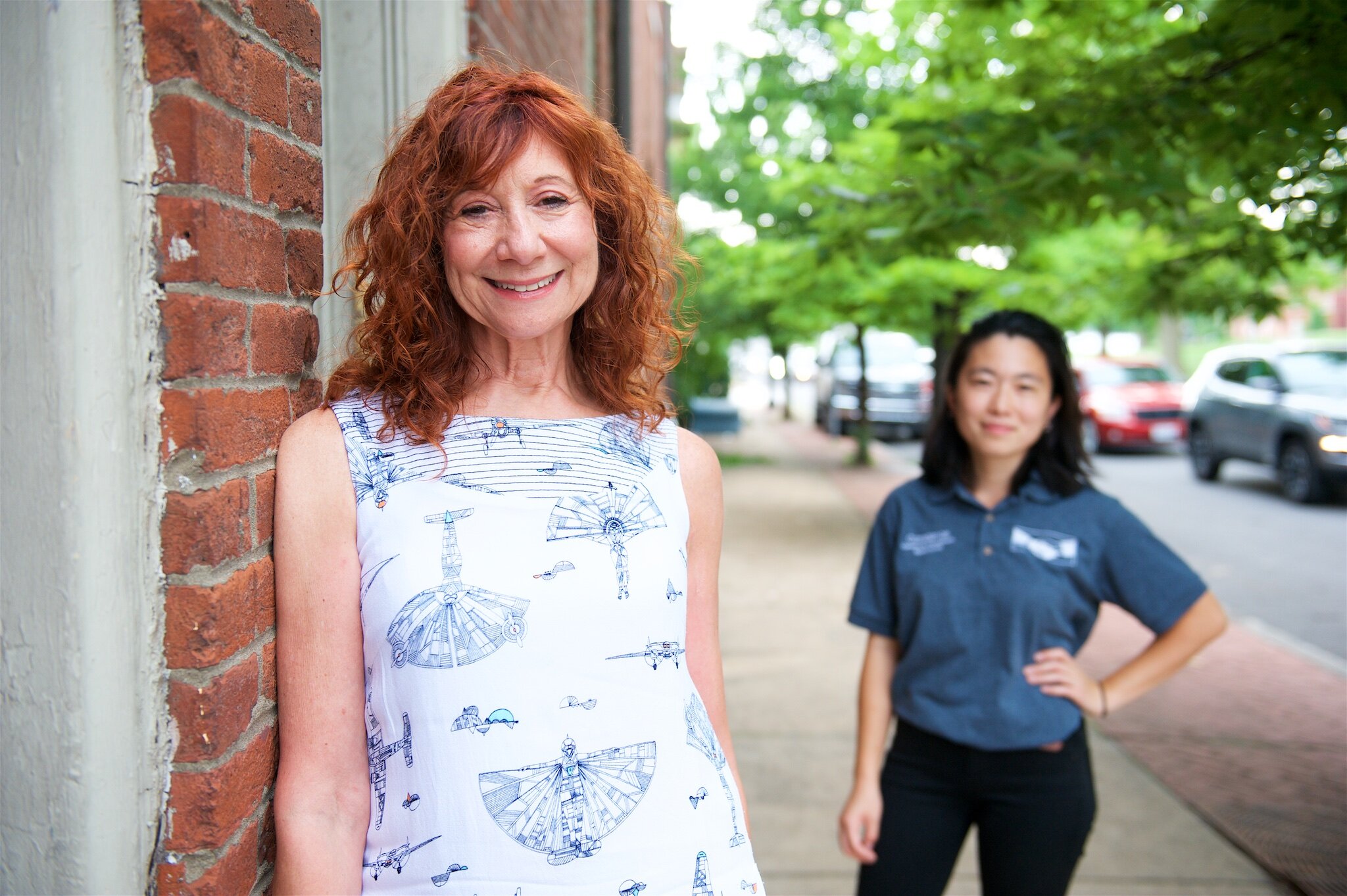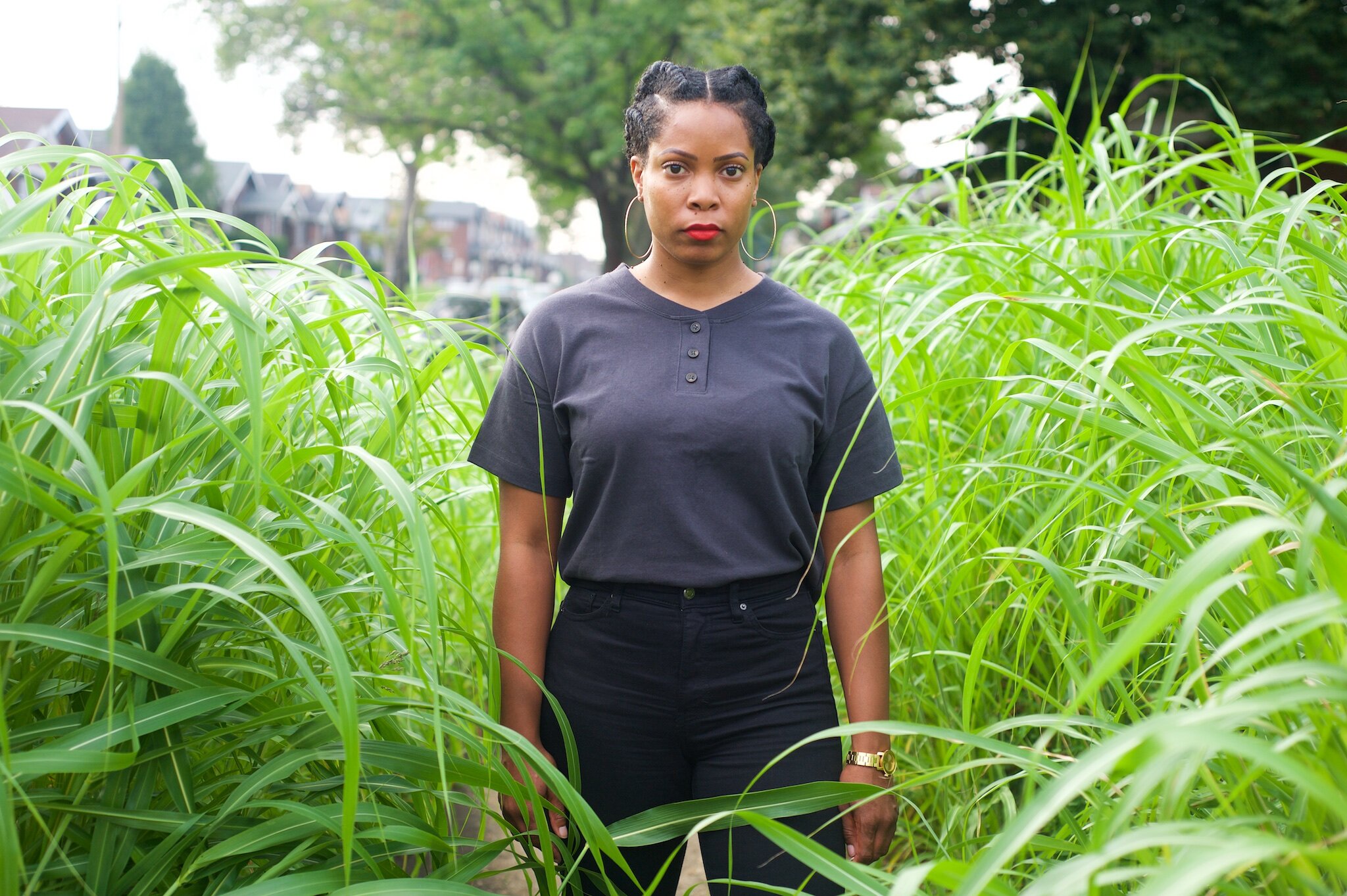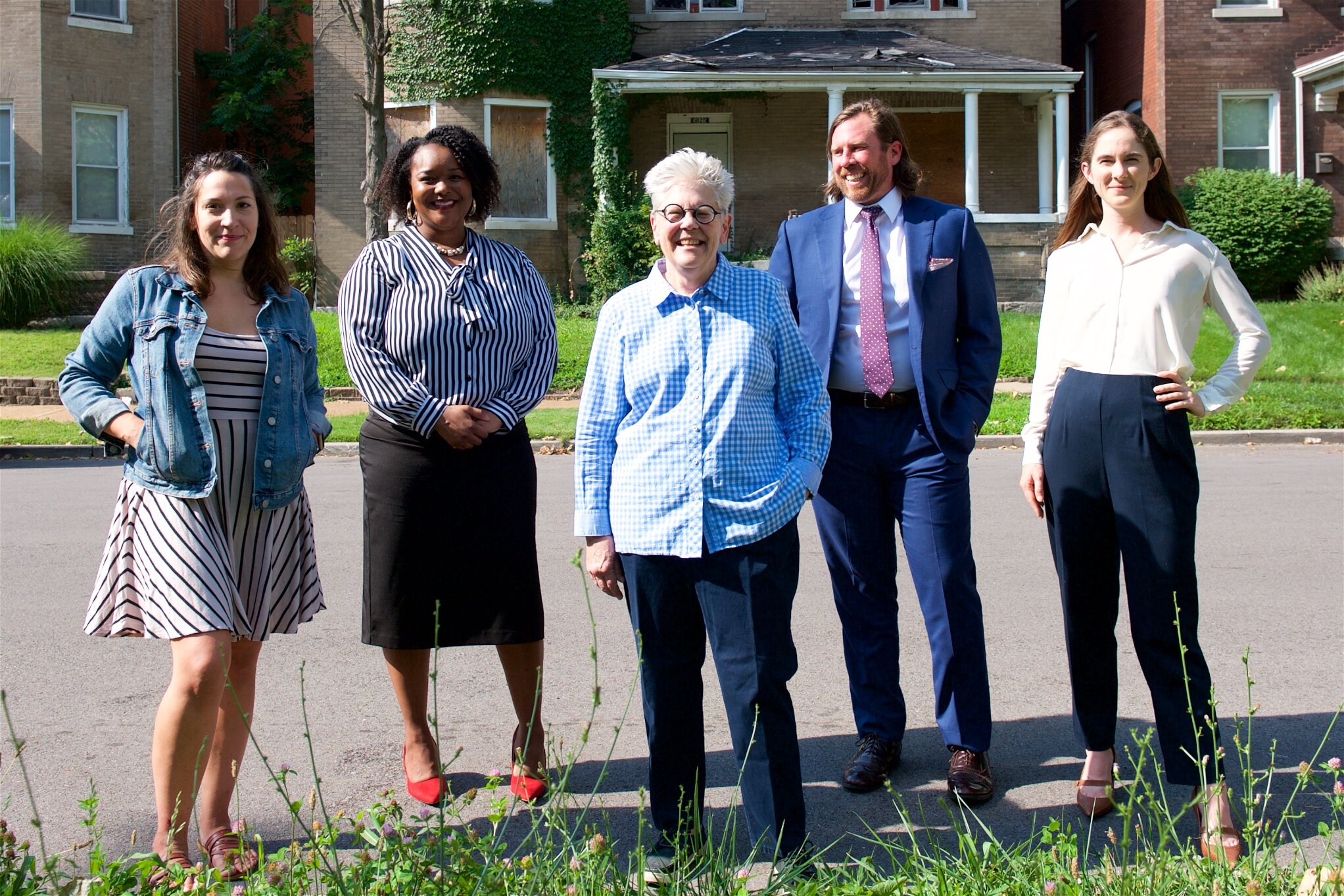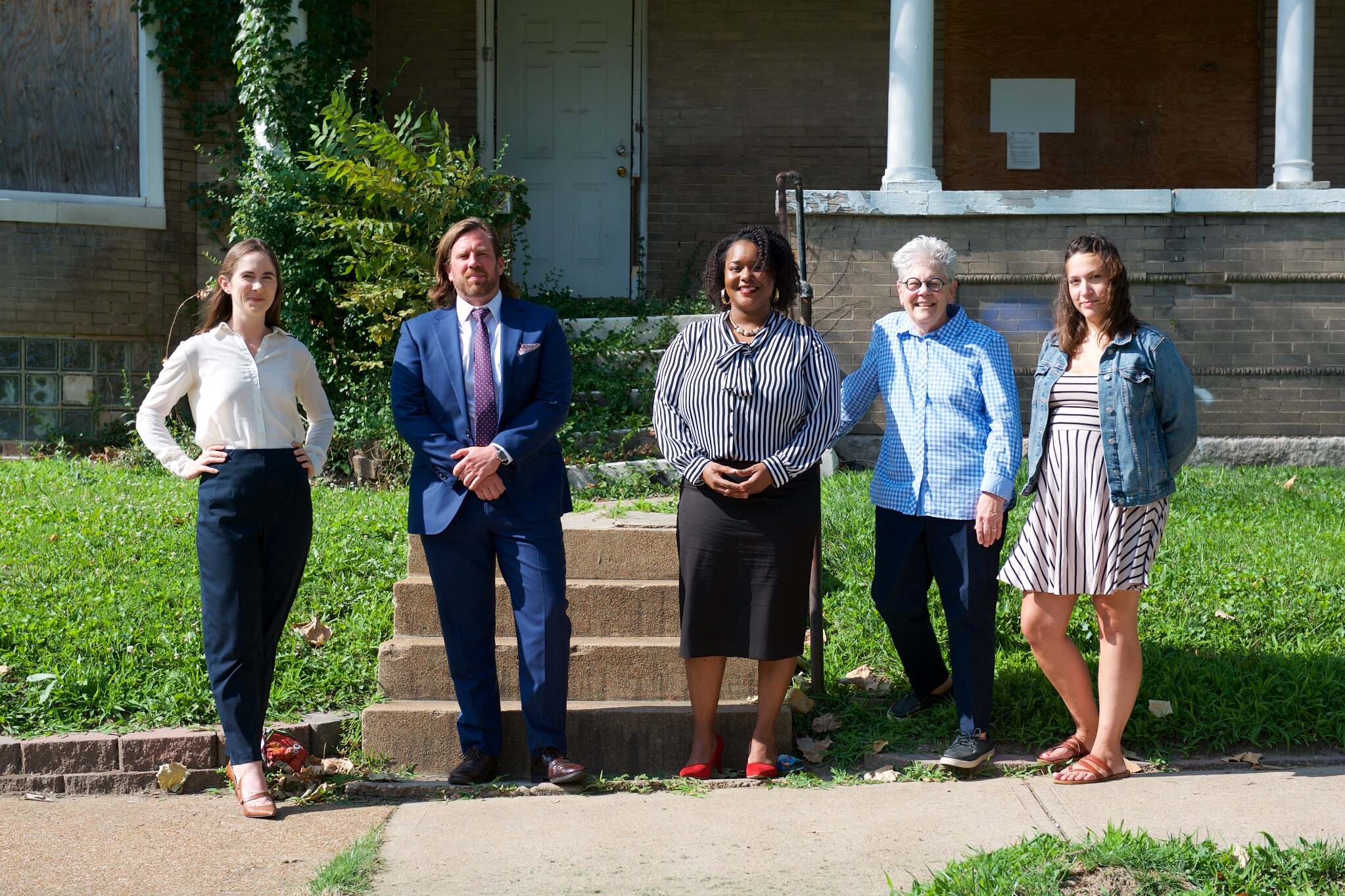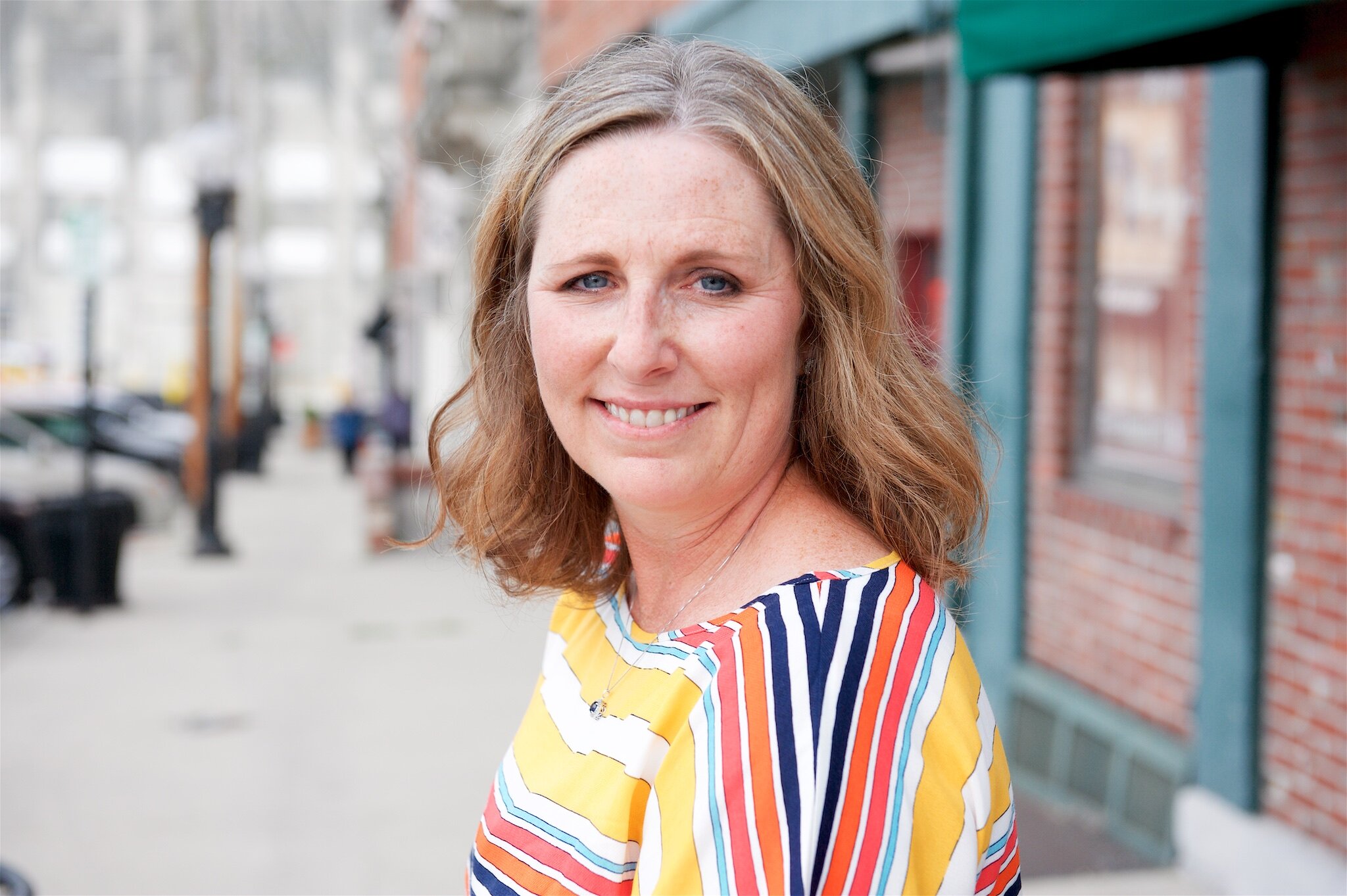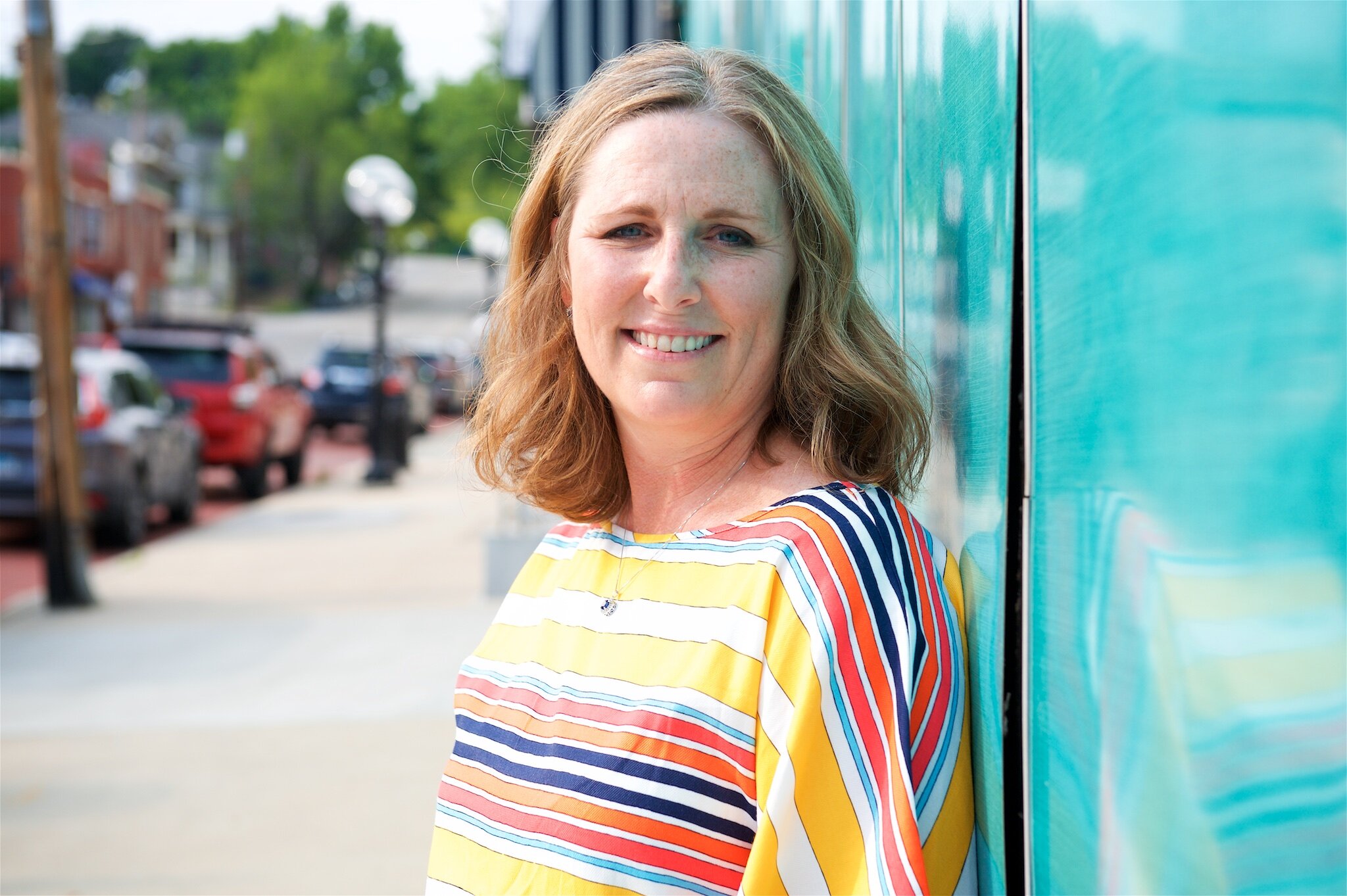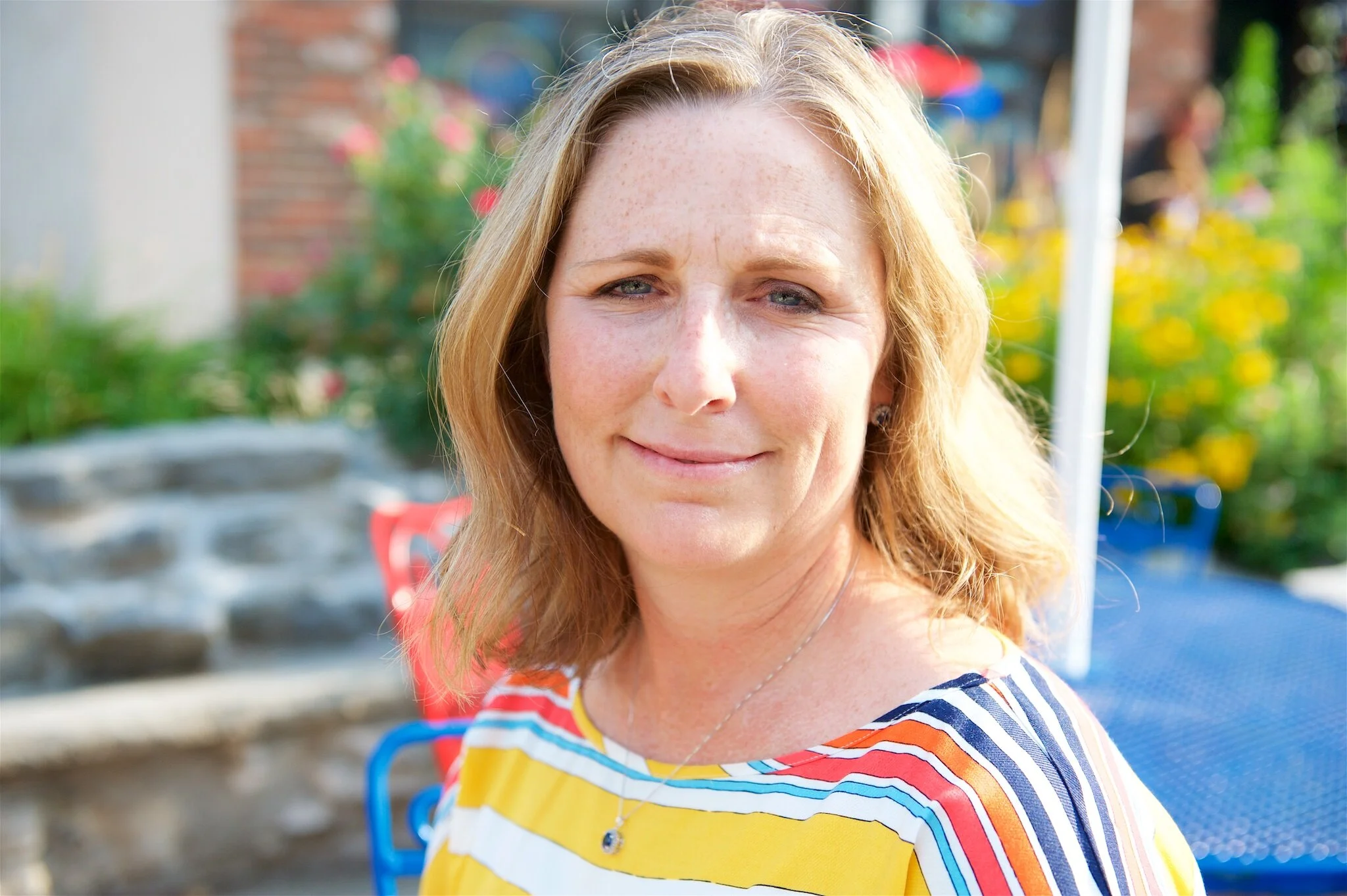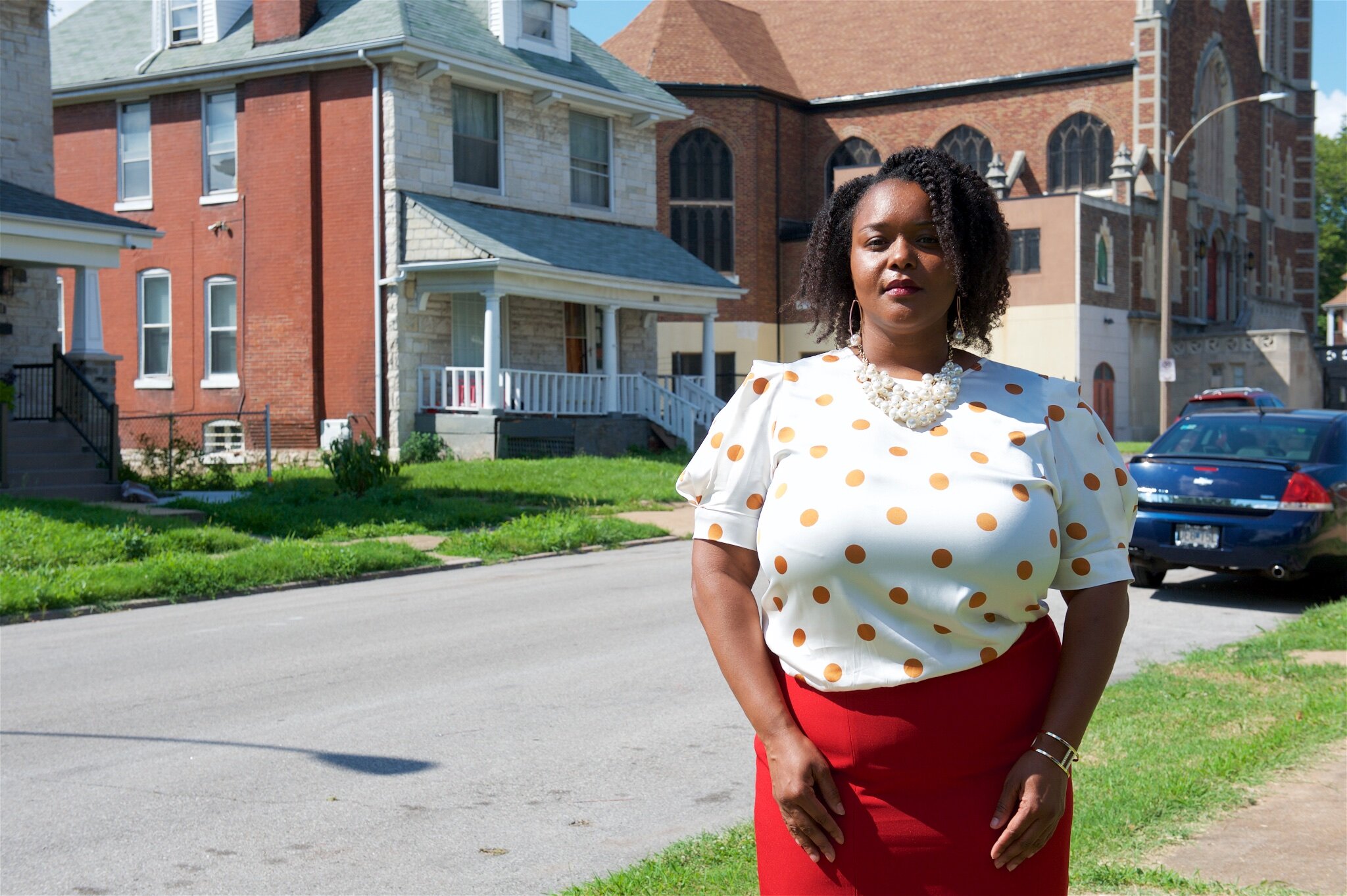Congratulations to Sundy Whiteside, recipient of our 2021 Award for Resident Leadership! Sundy is a resident of the Walnut Park East neighborhood, Board President of the St. Louis Association of Community Organizations (SLACO), and Co-Chair of the St. Louis Vacancy Collaborative's Vacancy Advisory Committee.
The Award for Resident Leadership recognizes a person who:
Has shown incredible volunteerism and involvement in their community and/or community initiatives.
Goes above and beyond typical resident action to sit on boards, head committees, and/or encourage the engagement of other residents.
Works to challenge the status quo in the St. Louis region.
Humans of St. Louis storyteller Lindy Drew met with Sundy to learn more about her and her work. Here’s some of what Sundy had to say.
Sundy Whiteside, resident of the Walnut Park East neighborhood, Board President of the St. Louis Association of Community Organizations (SLACO), and Co-Chair of the St. Louis Vacancy Collaborative's Vacancy Advisory Committee (Humans of St. Louis / Lindy Drew)
I was raised in North St. Louis City. I’ve seen it in much better times when people were more engaged and active in our neighborhood and critical elements that played a role in kids’ lives, like schools, were stronger. Schools were the place to go and the place to be. The old high school that’s now an elementary school around the corner from my house used to have after-school activities and put on plays. There were team sports and games. You can still see a basketball or football game at some, but things are different in terms of safety. I just don’t see our kids having enough of those types of recreational activities today to get to know each other. There used to be a time when children in the neighborhood would play outside and sit on the porch when the street lights came on. They didn’t have to worry about anything like someone being shot and killed or drug deals. Now it’s like a street mentality has taken over. Instead of fighting with their fists when they have an argument, now kids kill. Maybe the use of guns was glamorized playing things like cowboys and Indians, but weapons like that used to be feared. I see youth posing with them on social media now like there’s this sexy appeal to them and I’m astonished. Then again, when I hear about these kids being shot or killed, I guess I’m not exactly surprised.
I miss simple things, like counting on Sunday dinners. If there was an event and I had to wear a dress, I’d have one. My mother loved to buy me clothes. Everyone in the neighborhood, whether they were poor or had money, we all got new Christmas clothes and Easter outfits. Nowadays, some kids don’t even have what we’d call a going to church outfit. I hate how the family unit has been decimated in my community. Families had a strict ‘we care about you, so we’re not allowing you to do terrible things’ understanding. Now the senior members lost that sense of influence and authority to the point where families are almost afraid to say something when they know their own child is out in the streets doing bad things. Things have changed. The family structure is different. Priorities are different. A lot of it is due to drugs. Someone’s mother gets addicted to crack, her son ends up being the local drug dealer, and then his son takes over. It’s sad to see. There was a time when crack wasn’t in the lives of people around me. Everybody seemed to care more, seemed to be concerned more, seemed to value each other’s lives more than what we do today.
I come from one of those families everybody knew in the neighborhood — my grandmother, my mother, my aunts. Everyone called my grandmother, ‘Nana.’ She was nice but also had that strict side. She was known for maintaining her lawn. And if you were playing and stepped on it, she’d let you know: ‘Get off my grass!’ Every morning, she’d brew a pot of coffee, people would come over, and they’d sit on her front porch or in her kitchen to talk. The landscape’s so different now. It’s hard to trust anyone from the neighborhood streets and have them come in your house or have a cup of coffee in your kitchen.
What is it that makes you tireless about the work you do?
There are so many topics I’m into now — vacancies, cleanups, community development, benefit agreements. The work I do creates hope and that’s what keeps me doing it. When I host an event, especially neighborhood cleanups that go well, people are excited and there’s a lot of love. And, you know, we appreciate volunteers coming into the City and helping us clean up our neighborhoods. But when you see your own neighbors show up and clean up, and they’re working hard to keep our area clean, it’s even more inspiring. Like, “Okay, I do live in a place that’s worth something.” Looking around my neighborhood, there are dilapidated buildings, people are selling crack and speeding down the street, and it’s scary because you don’t know what’s getting ready to pop off. Living here, stuff like that can almost make you feel worthless. But then through these neighborhood cleanups that I help run, I see residents bonding from the planning process to the cleanups and it’s great. I go to many different neighborhoods in the City and I experience that over and over again. A lot of times I know the people, or I don’t know them at all and try to bring them together. And everything about the whole experience brings about camaraderie. It creates a synergy that breeds hope in our community.
SLACO is trying to build the capacity of neighborhood residents to unite, mobilize, and organize. People’s voices have been neglected for so long, some don’t even speak anymore. So we’re bringing more equity to the table to change that. Everything I’m doing from co-founding the St. Louis Vacancy Collaborative and co-chairing the Vacancy Advisory Committee to securing the Proposition Neighborhood Stabilization fund is focused on inclusivity and it’s community-driven. That also gives people hope, and that’s what gives me the breathe to keep going.
North of Delmar, trash is a huge issue. Even though our brick buildings are beautiful, we live in an environment where the worth of the housing and the area is not valued. Insiders and outsiders will just dump their things here. People living here have complained so much and authorities started to crack down by enforcing fines. But there’s a point where not enough is being done and the dumping and bad things continue to happen. Then it almost makes you feel like there must be a reason for that and, ultimately, it comes back to it being a reflection of you. When the value of where you live is minimal or worthless, you start to adopt that way of thinking. Then you start seeing children and adults recognizing the trash around here and throwing their drink containers on some vacant lot too. Now we’ve collectively developed a sense of, ‘Where I live is not worth anything. And if everyone else around me thinks that way, it’s probably the truth.’
So neighborhood cleanups inspire new ways for people to bond and see other residents who want to roll up their sleeves and do something for where we live. The first neighborhood cleanup I put together with my residents was in 2016. We always take before and after pictures. I always try to have snacks or food because it’s fun to break bread together. What do you do with family, with people you love and those who have taken care of you all your life? You get together, catch up, eat, and bond. And when we end our cleanups, the ‘I didn’t know you’ from before has completely changed. Neighborhood residents share a greater sense of worth and value. They feel euphoric and loved, like, ‘Yeah, we did it!’
Who’s the youngest person that came to a neighborhood cleanup and touched your heart?
I know a 14-year-old who comes to the cleanups. He’ll ride his bike there and do a lot of stuff. I just met him at a Fairground Park cleanup we did through North Newstead. This child is a talker and he talked the whole time. He’s brilliant. And after we got done, he said, “I really like this. I didn’t know our neighborhood was as bad off as it is.” Doing these cleanups, you really get to see the ins and outs of your neighborhood and it’s one of those things you want to close your eyes to after a while. It’s disturbing and distressing. I said, “Yeah, and I think every resident should be required to canvass in their area too so they can see what it looks like.”
What he saw that first day he came out to help was intense. And now he comes to our cleanups and is working with us. He’s inspired and really wants to do community work, so that’s a good thing. That’s why I applied for a grant to pay youth to participate so they can have that same euphoria I feel when I work in the community and also feel worthy. If that can be cultivated at a young age, that feeling will stay with that child through adulthood and they’ll want to care for and volunteer in their community. We don’t have a lot of money to do things, but we have a lot of people who care and are working together.
I want to charge every resident, especially north of Delmar, to commit to two hours every month of some form of community involvement. Whether you go to your local ward meeting or a parent-teacher meeting, it’s a small request. We don’t have the luxury to not be engaged and in community. It’s urgent. We’re about to be transformed. In other people’s eyes, our area is about to be revitalized. And in my eyes, we’re about to be pushed out if we don’t get more engaged and connected.
I don’t like the concept of ‘clean sweep.’ The terminology means to remove an unwanted person or object. It’s normally used in political elections, in the penal system, or in military terms. But it’s not what I want to hear used in neighborhoods, and that’s what’s getting ready to happen. If we don’t wake up and become active in what’s going on in some of our areas, we won’t be able to afford to live in them, and we will be pushed out.
My family and another family were one of the first Black families to move to Walnut Park. We had a lot of Caucasians living on the street and then they moved out. That led to a lot of the decline we see on the north side. Disinvestment and redlining tactics are being used to decrease our quality of life so we either move or have no voice, no money, no resources, nothing to stand on. My mother and grandmother used to say, “They’re blighting us out now. One day, they’re gonna show up here when it almost gets to rock bottom and take over.” And I want to say, “They are here.”
I watch the areas on the edge of Delmar, like Academy Sherman Park and the West End, doing their neighborhood planning to deal with the recent redevelopment there. And that’s what’s coming for the neighborhoods further north too. Gentrification is on the way. It’s an emergency situation and why every resident should start engaging with their community. Their lives depend on it. We can’t just allow it to weigh on our seniors and adults. We have to start nurturing our children to cultivate value in this too. That’s the critical piece that will help create and sustain thriving neighborhoods for the future.
The level of participation in the community is strong but it’s also on life support. And I love the word ‘community,’ but I also love the word ‘neighborhood.’ For a long time, in my neighborhood, I never knew a Walnut Park East and a Walnut Park West. We were just Walnut Park, united. And I think about how at some point, we dropped the word ‘neighbor.’ The atmosphere just becomes the ‘hood.’ What a contrast. A name is critical. It has such an impact. My name is Sundy, and something seeps in there to permeate in my cells that causes me to be kind of sunshine-y. Anyway, remember Sesame Street and how they sang, “Who are the people in your neighborhood?” Someone pointed out how SLACO talks about being an umbrella association for all the neighborhoods, but what is a neighborhood? Where some people grow up, they have no concept of it. Oh my goodness, it’s true! When I looked out my window to see the landscape, we had Mrs. Sneed across the street and Mrs. Ashley — we had neighborhood and that sense of community. We really knew who the people were in the neighborhood — the person who drove the bus, the person who delivered mail. Now so many residents don’t even want to get to know each other. It’s a different atmosphere. In my neighborhood, we do have a groundswell of community. We have those pockets of neighbors we all love and give a card to or vegetables from our gardens. Still, it used to be stronger.
One day I came outside my house and there were like 60 kids on the corner. The most recent thing they started doing when young people got shot and killed was a balloon release and then they shoot bullets up in the air. They’d shoot for like seven minutes and it would horrify us living in the area. So I talked to the local lady who’s more in tune with the younger folks and asked if she could set up something for people from my generation to dialogue with them, because I really want them to come to our SLACO conference. Teaching younger people is the critical piece. There’s this African proverb that says ‘the child who is not embraced by the village will burn it down to feel its warmth.’ I feel like that’s what is happening in our neighborhoods, in our community.
I walked outside, and was like, Mr. Sneed, “What’s going on down the street?” And he said, “I don’t know. I saw all of that. But let me tell you if it’s not your house, Ms. Troy’s house, or Mr. Anderson’s house, I don’t pay any attention. I’m not worried about anybody else but you all.” So we’ve reduced ourselves to select families who we’ve always known in the neighborhood and kind of keeping everyone else at arm’s distance.
I live in my grandmother’s house. The reason I stayed in St. Louis is that my mother fell ill. Mom loved to smoke and to eat whatever she wanted to — sugar, fried food. She didn’t exercise much, but she worked hard to have a better life for me and I did the same for my daughter. Mom had her first stroke when I was in college. I was like, “Lord, how can you allow this to happen to my mom?” It just got worse. A few years after I graduated, she started losing her memory and was in the early stages of dementia. I was her caretaker for nine years and it was hard. I was also working as an electrical engineer and I paid a nurse to come to my mother’s house to care for her.
Courtesy of Sundy Whiteside
My mom was originally a school teacher but ended up working for Anheuser Busch in the brewery as a bottler. She made a lot of money doing that and it put me through school at Missouri University of Science and Technology, formerly known as UMR, the University of Missouri-Rolla. Mom was diagnosed with diabetes in her 40s and you always think your parents — mothers, especially — who organize, plan, and orchestrate everything would be on top of things. Well, she was on insulin shots and wasn’t administering her shots like she should have. By the time she was 65, she had her first stroke which turned into multiple strokes. Veins delivering oxygen to her brain started to collapse and that caused her to have dementia.
She had wild episodes. I wish I could write a book on all of the episodes she had wandering down the street and around the corner. In her early stages, I didn’t even know what dementia was. When she started to not drive so well, I just thought maybe she was out of practice. She still looked so young, she was witty, and she’d go off on you but you’d be loving it. I remember I was working in St. Peters and she’d call me to take her somewhere. I was like, “But you have a car. You can drive. C’mon now!” She said, “No, I need you to come take me.” So I thought I’d give her a lesson again. I was so naive. My daughter, my mom, and I hopped in the car and I had Mom driving in a big parking lot. It was the most alarming thing and that’s when I realized she was not putting on.
She hadn’t started losing her memories, but eventually it got bad. She was incontinent and needed to be bathed daily. My mother lived five blocks from her 90-year-old mother, so we moved them in together. My grandmother couldn’t do anything to help though. One day I just cleaned my mother up and brought her with me to work. She sat there almost the whole day. I don’t think she enjoyed it, but it was like bringing my daughter to work when she got out of school early. She didn’t bother anybody. Thank goodness, no one said anything.
When I took her to the bathroom to clean her face, I warm the washcloth and give it to her and she’d start cleaning the counter. So she’d have these episodes and then be back to her normal self. When she got more ill, I needed to move her into a nursing home and within months she died. But while I spent time with her all those years, I always wanted to know, “Is my mother in there? Is she trapped? Is she feeling like she can’t articulate what’s happening?” I wanted to know, not from experience, but I’d like someone to share what having dementia is really like.
Courtesy of Sundy Whiteside
The mother-daughter relationship has been the most powerful relationship in my life, whether it’s my relationship with my mom or my relationship with my daughter. That relationship dynamic has been my most emotional and powerful human connection. I spent a few years in a depressed state after my mother passed and then my grandmother. Finally, when my daughter was just about finished with college, I got back to work and began with the Community Action Partnership movement at the Human Development Corporation as their network administrator and IT person. And my daughter is now a Doctor of Pharmacy — Dr. Whiteside — and she’s engaged to be married. I am so blessed and excited! When she was a year from graduating, I felt like there was a light at the end of the tunnel and this single parent Mom was ready to do more things in the community. I’d go to meetings, become engaged, and pay attention to what was happening. I started doing neighborhood cleanups, tutoring math and science to students, and working with the Walnut Park East Neighborhood Association. From there, SLACO and vacancy. Now my position is all-volunteer, and I love what I do.
- Sundy Whiteside, resident of the Walnut Park East neighborhood, Board President of the St. Louis Association of Community Organizations (SLACO), and Co-Chair of the St. Louis Vacancy Collaborative's Vacancy Advisory Committee
We hope you can join us to celebrate community builders like Sundy at our Community Development Family Reunion event on September 23!
Photostory by Humans of St. Louis and Lindy Drew. Photostory narratives represent the opinions of the speaker(s) featured only and do not necessarily represent the views of the Community Builders Network of Metro St. Louis.



